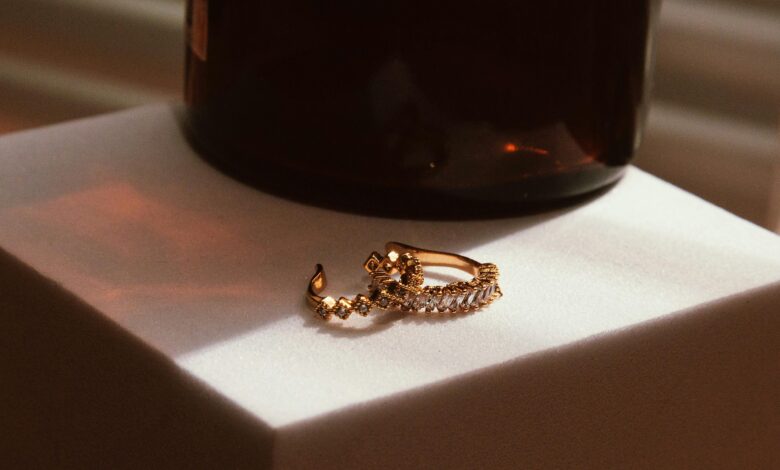Choosing the Best Clarity Grade for Your Diamond Engagement Rings

In the world of romance, engagement rings are of legendary importance as a vow of eternal love and devotion. A timeless symbol of unwavering love, the diamond is at the center of the attraction of these rings.
In addition, it is important to utilize the knowledge of famous gemologists or jewelers when assessing diamond engagement rings with different clarity grades. These experts can identify minute variations in clarity and offer priceless advice based on preferences and financial constraints.
They may also provide information on the best mounting options and settings to bring out the best features in your selected diamond engagement rings while minimizing the appearance of any flaws. If you would want information on selecting the ideal clarity grade for your engagement rings made of diamonds.
Different types of inclusions in Diamond Clarity of Engagement rings
Even though the term “inclusion” is commonly used to refer to any kind of flaw in a diamond, there are many types of inclusions that can change a diamond’s appearance. Some common inclusion types and how they could impact a diamond’s clarity are as follows:
Cloud: A cloud is a collection of tiny, closely spaced pinpoints rather than a flaw in a diamond. A cloud can make a diamond appear dull and foggy, which reduces its brightness. A diamond is said to as clouded if it contains numerous big clouds.
The Four CS of Diamond Engagement Rings
Clarity, one of the famous “Four Cs” along with cut, color, and carat weight, refers to the existence of flaws, or inclusions and defects, both internal and external, in a diamond. Similar to a diamond’s fingerprint, these natural characteristics were created during the crystallization process of the diamond.
Understanding the Clarity of Diamonds Engagement Rings
However, Selecting a diamond might be difficult. It’s crucial to be clear. It modifies the diamond’s appearance. To select the ideal diamond, it is necessary to comprehend clarity grades.
What is Clarity in Diamond Engagement Rings
Clarity Grades: Flawless to included
Clarity grades determine the extent and appearance of these defects when magnified. They range from Flawless (FL) to Included (I). Different qualities offered by each grade affect the diamond’s monetary value as well as its appearance.
Balancing Purity in Engagement Diamond Rings and Budget
The cost of Flawless Diamonds
Finding the ideal balance between cost and purity is crucial when choosing the ideal clarity grade for your engagement ring made of diamonds. While a flawless diamond can appear attractive, it comes with a costly price tag that may not fit with your finances.
Opting For Is or VS Clarity Grades
As an alternative, think about choosing diamonds in the very slightly included (VS) or slightly included (SI) range, where flaws are often very small and imperceptible. This compromise keeps the visual appeal of your engagement ring intact while allowing you to devote resources to other important features like cut quality or carat weight.
Prioritizing Other Factors
Moreover, the choice of clarity grade is inherently subjective, contingent upon personal preferences and lifestyle factors. For individuals with an active lifestyle or professions that entail manual labor, prioritizing a higher clarity grade might be less paramount compared to those who value absolute perfection in their diamond. In such cases, diamonds with lower clarity grades, such as those categorized as included (I), can offer exceptional value without compromising on beauty when set in an engagement ring.
What is the GIA Diamond Clarity Scale?
To give buyers an understanding of each diamond’s clarity level, grading organizations such as the Gemological Institute of America (GIA) use diamond clarity charts to judge diamonds based on their appearance and assign each stone a Gives a degree of clarity within a given scale.
The terms “included” (I) and “flawless” (FL) refer to the different levels of diamond clarity. Sub-grades inside each clarity grade provide further details regarding the diamond’s inclusions’ visibility.
Tips for Buying a Diamond Clarity
A few decisions should be made before purchasing a diamond to obtain the best value and beauty, particularly about clarity.
Avoid making excessive buys.
Paying too much for clarity is all too common. A VS1 or VS2 diamond will typically cost far less than an FL diamond while yet being just as clear to the eye. Take in mind the lowest clarity grade that still provides an eye-cleaning diamond rather than concentrating on a specific clarity grade. It would be wiser to allocate your funds towards elements like the diamond cut quality that have a greater impact on a diamond’s brilliance.
Find the Best Clarity in Diamonds
The ideal clarity grade depends on the shape of your diamond. As said before, certain diamond shapes are far more adept at concealing inclusions and other flaws than others.
Examine the diamond thoroughly.
In addition to examining the clarity plot and certificate, carefully inspect the diamond to check for any obvious inclusions. For this very reason, online retailers with high-end pictures include James Allen and Blue Nile.
Review the Diamond Clarity
See if you can spot any inclusions or defects. Make a note of their location on the diamond if you spot any. Are they at the center of the table, where they will be seen, or close to the diamond’s edge, where the setting could shield them?
Finding an eye-clean diamond at a reasonable price is the main objective. Seek the advice of an expert if you’re unsure.
Conclusion
In conclusion, selecting the best clarity grade for your diamond engagement ring necessitates a thoughtful balance between purity, budget, and personal preferences. By learning the complex subject of clarity grades and getting help from skilled experts, you may embark on this major journey with confidence, knowing that your selected diamond not only represents enduring love but also reflects your discerning taste and uniqueness.
After all, the ideal engagement ring is not only an expression of commitment but also of the special bond that unites these two people who will be together for the rest of their lives.


